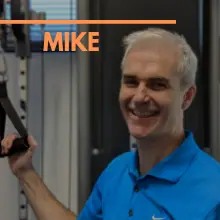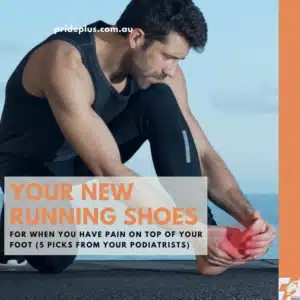Diabetes and Exercise
What is Diabetes?
Type 2 diabetes mellitus (T2DM) is a chronic condition in which the body’s cells do not respond properly to insulin.
Most often, this leads to increased blood glucose (sugar) levels, called 'hyperglycaemia'.
Why is physical activity or exercise important in the management of diabetes?
Increasing physical activity can reduce the incidence of diabetes by almost 60% of people at risk (5). Better blood glucose management often means people can reduce their diabetes medications.
As people with diabetes age, the benefit of maintaining muscle mass through exercise is also likely to improve physical function and independence (8).
Studies show that exercise can (7):
- help prevent or delay diabetes
- improve control of blood glucose (sugars)
- decrease the proportion of body fat
- decrease the risk of heart disease
- increase heart and lung fitness in people with diabetes
What exercise is best for people T2DM?
The total amount of exercise best for the management of Type-2 Diabetes should include a combination of aerobic and resistance training.
The table below shows the type, intensity, duration and frequency of exercise recommended for people with diabetes. An Accredited Exercise Physiologist will create a suitable exercise program for you.
| Type | Intensity | Duration | Frequency |
| Aerobic Exercise (for heart and lung strength) | Moderate
Vigorous |
Total of 210 min pw
Total of 125 min pw |
At least 3 days per week and no more than 2 consecutive days without completing |
| Resistance Training (muscle and bone strength) | Moderate to Vigorous | Minimum 60 min pw | At least 2 sessions per week |
Who should exercise?
Everyone. However, there are some risks associated with physical activity for people with diabetes but the risks of inactivity mostly outweigh them.
The following points should be kept in mind before starting an exercise program
Low blood glucose: If necessary, consult with your health professional before commencing exercise to discuss your medications and monitoring of your blood glucose levels. Exercise may need to be temporarily modified.
Risk of cardiac events (e.g. heart attacks): People wishing to exercise vigorously, older people, and people with established cardiovascular disease should be screened prior to the commencement of their program.
Peripheral neuropathy: Appropriate footwear, regular foot inspection and low-impact exercises are essential with peripheral neuropathy, and are also highly advised for all people with diabetes. See your podiatrist for advice.
Hypertension (high blood pressure): Although exercise reduces hypertension, those with poorly controlled blood pressure should see a specialist EP to structure their exercise plan.
How do I commence an exercise program?
You can talk to your doctor about an exercise program that suits your personal preferences and circumstances. Ideally, you can book straight in with our Exercise Physiologist (EP) in Pascoe Vale.
EP’s have specialised training in the design and delivery of exercise and lifestyle interventions for people with chronic and complex conditions including diabetes.
Book online or call 9304 0500.
References
PridePlus Health - Exercise Physiology https://prideplus.com.au/exercise-physiology/
PridePlus Health - For Referrers https://prideplus.com.au/referrers/
PridePlus Health - Blog https://prideplus.com.au/blog/
Exercise is Medicine Australia www.exerciseismedicine.org.au
Exercise Right www.exerciseright.com.au
1. Centers for Disease Control and Prevention. National Diabetes Fact Sheet: general information and national estimates of diabetes in the United States, 2007. Atlanta, GA: Department of Health and Human Services, Centers for Disease Control and Prevention2008. Available from: Department of Health and Human Services, Centers for Disease Control and Prevention.
2. Church TS, Blair SN, Cocreham S, Johannsen N, Johnson W, Kramer K, Mikus CR, Myers V, Nauta M, Rodarte RQ, Sparks L, Thompson A, and Earnest CP. Effects of aerobic and resistance training on hemoglobin A1c levels in patients with type 2 diabetes: a randomized controlled trial. Jama. 2010;304(20):2253-62.
3. Dunstan DW, Zimmet PZ, Welborn TA, De Courten MP, Cameron AJ, Sicree RA, Dwyer T, Colagiuri S, Jolley D, Knuiman M, Atkins R, and Shaw JE. The rising prevalence of diabetes and impaired glucose tolerance: the Australian Diabetes, Obesity and Lifestyle Study. Diabetes Care. 2002;25(5):829-34.
4. Hordern MD, Dunstan DW, Prins JB, Baker MK, Singh MA, and Coombes JS. Exercise prescription for patients with type 2 diabetes and pre-diabetes: A position statement from exercise and sport science Australia. J Sci Med Sport. 2011.
5. Knowler WC, Barrett-Connor E, Fowler SE, Hamman RF, Lachin JM, Walker EA, and Nathan DM. Reduction in the incidence of type 2 diabetes with lifestyle intervention or metformin. N Engl J Med. 2002;346(6):393-403.
6. Magliano DJ, Barr EL, Zimmet PZ, Cameron AJ, Dunstan DW, Colagiuri S, Jolley D, Owen N, Phillips P, Tapp RJ, Welborn TA, and Shaw JE. Glucose indices, health behaviors, and incidence of diabetes in Australia: the Australian Diabetes, Obesity and Lifestyle Study. Diabetes Care. 2008;31(2):267-72.
7. Marwick TH, Hordern MD, Miller T, Chyun DA, Bertoni AG, Blumenthal RS, Philippides G, and Rocchini A. Exercise training for type 2 diabetes mellitus: impact on cardiovascular risk: a scientific statement from the American Heart Association. Circulation. 2009;119(25):3244-62.
8. Park SW, Goodpaster BH, Lee JS, Kuller LH, Boudreau R, de Rekeneire N, Harris TB, Kritchevsky S, Tylavsky FA, Nevitt M, Cho YW, and Newman AB. Excessive Loss of Skeletal Muscle Mass in Older Adults with Type 2 Diabetes. Diabetes Care. 2009.
A PridePlus Health Case Study on Diabetes (T2DM) and Weight Loss
Background
“My doctor told me to do more exercise”
A 58-year-old male with T2DM, hypercholesterolaemia, overweight, early osteoarthritis right knee, hypertension.
Reduction in movement capacity and function, increase in risk factors.
Attends the local gym 3 days per week but only walking and cycling at moderate levels for 20 - 40 minutes.
No resistance exercises in exercise routine.
Goals
- Increase exercise tolerance and strength for health and wellbeing
- Reduce adipose tissue and increase lean muscle mass
- Reduce knee pain
- Reduce risk factors via weight loss and lowering blood pressure
Baseline Assessment
Unilateral (one-sided) knee OA. De-conditioned hip and knee stabilisers, de-conditioned core stabilisers, quadriceps. Limps when walking to protect the right knee. Unable to access muscles that protect the right knee from overloading. Abdominal obesity. Unable to perform a bridge without holding breath and unable to walk without limping in the right leg. Fatigues easily on low bike setting (level 2) and on the treadmill (incline 3, speed 3.5 km/hr). Weight 104kg (BMI 35.9), BP 150/80.
Program and Team
Referred by GP to EP as a General Practitioner Referral for Group Allied Health Services under Medicare for patients with T2DM. Attended 1 x Initial one on one session and 8 x group consultations. Treatment over 9 weeks.
Gait focus, stability and strength focus, education about interval training, resistance training, compound resistance exercises, goal-focused approach.
Performed 3 x exercise routines per week at his local gym and 1 x group class (total of 4 structured exercise routines per week).
Exercise progressions were given to the client on a weekly basis.
Progress
A gradual but steady increase in exercise loads. Bike setting on level 7, treadmill incline up to 12 degrees and walking gait has improved, perform bridges 10 x 10 seconds with good breathing technique and recruitment of key leg and core muscles. Can perform 3 x 15 of the following: squats with 90 degrees of knee flexion carrying 12kg, cable rows carrying 20kg, arm curls with 6kg in each hand.
At 9 weeks Weight 99.7 kg (reduction of 4kg), BMI 34.5 (was 35.9), BP 125/68 (was 150/80).
Outcome
The client is feeling confident and enjoying the exercise routines. “It feels really good”.
More active than before and is continuing to improve.
Risk factors lowered.
Continues to attend the local gym and the weekly class.
Learning
“Resistance and cardiovascular exercise are essential to improve health and well-being” - EP Mike Fitzsimon




